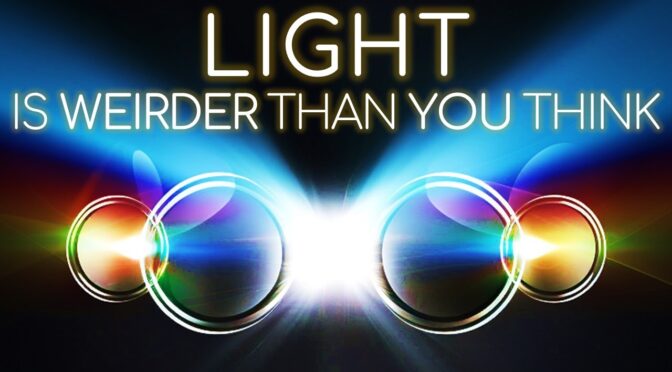Based on the video “The Attribute of Light Science Still Can’t Explain” by Astrum, this article aims to shed light on the perplexing nature of light itself. Far from being just a source of illumination, light has properties that have puzzled scientists for centuries. From its dual nature as both a particle and a wave to its strange behavior when observed, light is a subject that continues to challenge our understanding of the universe.
Contents
- The Paradox of Light
- The Double Slit Experiment
- Einstein and the Photoelectric Effect
- Light’s Dual Nature
- The Three Polarizer Paradox
- Beyond Light
- The video
- The Probabilistic Nature of Reality
The Paradox of Light
Light is a force that has puzzled scientists for centuries. The video by Astrum dives deep into this mystery, revealing that light behaves differently depending on whether it’s being observed. This strange characteristic has led to numerous experiments, each adding another layer to the enigma that is light.
The Double Slit Experiment
In the early 18th century, Isaac Newton theorized that light was made up of tiny particles. But a century later, Thomas Young’s double slit experiment showed that light behaved more like a wave. Young demonstrated this by shining light through two narrow slits and observing an interference pattern on a board. This was clear evidence that light was more wave-like than particle-like.
Einstein and the Photoelectric Effect
Fast forward to the early 20th century, and another puzzle emerged. Scientists observed that when light hit a metal surface, electrons were emitted. Einstein solved this conundrum by proposing that light travels in packets of energy known as photons. His theory suggested that light was both a particle and a wave, earning him a Nobel Prize for his groundbreaking work.
Light’s Dual Nature
With technological advancements, scientists revisited the double slit experiment, this time emitting a single photon through the slits. The results were astonishing. The photon behaved like a particle but also created an interference pattern, indicative of wave-like behavior. Even more intriguing was the discovery that light’s behavior changed when it was observed, as if it was aware of being watched.
The Three Polarizer Paradox
Adding to the complexity is the three polarizer paradox. When a photon passes through polarizing sunglasses, it either gets absorbed or passes through entirely. Adding more lenses can actually increase the amount of light that makes it through, defying all logic. This suggests that light exists in a state of probability until it is observed.
Beyond Light
What’s even more astounding is that this isn’t just about light. All particles of matter, including atoms and even complex molecules, behave in a similar probabilistic manner. This raises profound questions about the very fabric of reality and our understanding of the universe.
The video
The Probabilistic Nature of Reality
The astonishing findings about light’s behavior extend far beyond just photons. In fact, the probabilistic nature we observe in light is a characteristic shared by all particles of matter. Yes, you read that right—everything from atoms to complex molecules also exhibits this perplexing tendency to exist in a state of probability until observed.
Atoms and Molecules Join the Enigma
Atoms, the building blocks of matter, and molecules, the chemical compounds that make up most of the substances we interact with, are not exempt from this quantum weirdness. Experiments have shown that electrons, which are subatomic particles, also display wave-particle duality similar to light. Even larger, more complex structures like molecules have been observed to behave in ways that can only be explained by quantum mechanics.
The Fabric of Reality in Question
This widespread probabilistic behavior among all particles of matter throws a wrench into our conventional understanding of the universe. It suggests that the very fabric of reality is not as stable or as predictable as classical physics would have us believe. Instead, it appears that the universe operates on a set of rules that are inherently probabilistic, which means that there’s an element of chance or randomness built into the very core of existence.
Implications for Our Understanding of the Universe
The implications of this are profound. If everything in the universe, from the smallest particle to complex systems, operates on principles of probability, what does that say about the nature of reality itself? Could it be that the universe is not a fixed, stable entity but rather a constantly shifting tapestry of probabilities? And if that’s the case, what does it mean for our understanding of space, time, and even consciousness?
In essence, the probabilistic behavior of light and matter opens up a Pandora’s box of questions that challenge our most fundamental assumptions about the universe and our place in it. It’s a topic that not only intrigues scientists but should capture the imagination of anyone interested in understanding the true nature of reality.

